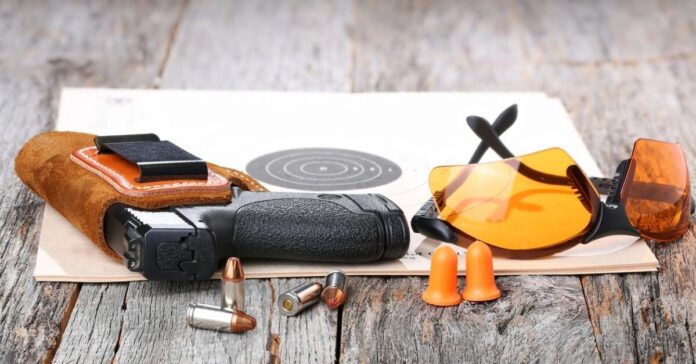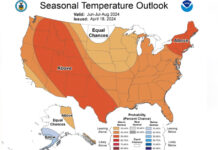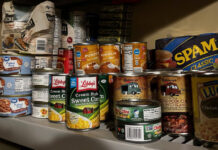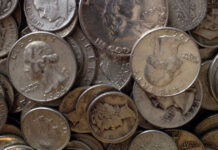I’ve owned guns for more than 30 years. I’ve had a concealed carry permit for almost as long. I reload. I’ve competed in multiple shooting competitions, including law enforcement shoots. Years ago, I was certified as a firearms trainer in several shooting disciplines, and I am a certified ranger officer. I’ve also trained with nationally recognized trainers and shot more than 100,000 rounds. I’ve served on the board of gun clubs and run organized shoots.
Am I a gun collector? I guess. I certainly have a collection of guns, but I don’t seek specific models, like guns used in WWI, guns from the Wild West, or guns that are engraved. My guns are shooters and I buy them to meet a perceived need. As my needs change or as the guns change, I upgrade or buy a new one.
Over the years, I’ve learned some valuable lessons and developed some personal policies about gun ownership that have nothing to do with shooting. I learned some of these the hard way. I’m going to distill the lessons of these 30 years down into 14 I think will benefit other gun owners. If you are a newbie, you may find several useful. If you are an old gun hand, I hope at least one or two will be worth consideration.
1. Never Tell Anyone How Many Guns you Have
Regardless of whether you have four guns or 40, you are likely to run into someone who thinks that is too many. If asked, it’s better to say nothing.
I have a bunch of guns. I don’t know how many because I have intentionally never counted them. One reason is that they have never all been in the same room at the same time. More importantly, if I don’t know, I can’t tell. If I was in court and they asked me how many guns I have, I can tell them I don’t know without violating my oath. At best, I could guess at a range.
So, what do you say when someone asks you how many guns you have? My normal answer is, “More than I need, not as many as I want.” And that’s true. As technology advances, so do guns. For example, I’d like to get a pistol with a red dot. But read the room. It may be better to avoid a funny answer. In that case, I tell them it’s a rude and I am no more likely to answer that than they are to tell me much money they have in the bank.
Likewise, don’t talk about your guns. Don’t show them off. Just as I like to keep my prepping quiet among my casual acquaintances, I don’t talk about the gun I am carrying, the guns I own, or what I just bought. Try also to keep workman and others who visit your home from seeing your guns. The less they know, the less likely they are to talk about it. When someone talks about it, you become a potential target.
2. Never Let Anyone See the Inside of your Safe
My policy is that no one sees the inside of my safe, including my best friend. If I want to show him my new gun, I go get it. I don’t let him peer over my shoulder while I spin the dial and haul open the door. The contents of my gun safe are none of his business, and vice versa. The only person who has the combination besides me is my estate planning attorney because it is part of the package that goes to the executor of my will.
Has my wife seen the inside of my safe? Yes, but I don’t let her paw around in there. She only sees the surface layer.
3. Have a Gun Safe
Of course, for the foregoing to apply, you have to have a gun safe.
If you own more than three guns, it’s time to invest in a gun safe. Get one with the old fashioned combination lock where you have the spin the dial this way and that. Don’t get one that uses electronics or has a key. I’m OK with a key on a gun cabinet, which is good for keeping kids and nosy neighbors away from your guns, but for theft protection, you need a real-deal gun safe. For years, I had a safe in the garage and a gun cabinet in the bedroom closet. That gave me easy access to an AR, a shotgun, and a pistol while it stored the rest of my collection in a more robust safe.
Get the largest safe you can afford because you will probably acquire more guns over the years. Also, you will find other things you want to put in there, like important paperwork and maybe your extra prescription drugs.
Once you get a safe, place it in the corner of a room and bolt it to the floor, preferably to a cement floor. A corner is important because it prevents access from two sides. Bolting it down is important because it not only prevents someone from stealing the entire safe, it stops thieves from tipping it over and attacking it from the bottom, a common weak point. If the safe is in a locked room, so much the better because no one will stumble across it.
4. Multiple Safes are Better than One Safe
If a drug addict or other burglar breaks into your house, they will look longingly at the safe but they’ll concentrate on stealing cash, jewelry, your laptop and tablet, and other items you have lying around. A good safe requires a level of expertise and/or tools not possessed by most hit-and-run burglars looking for a quick score so they can afford their next hit.
Having multiple safes will slow down a robber. If you have a secure room with three safes in it, they have to break into the room and then break into each safe, a time consuming operation that might not be worth the time, effort, and risk. If you have an alarm and cameras, they should not have time to tackle a safe.
One thing you can do if you fear theft is to keep a wooden firearms display case in your den with some old wooden stocked rifles and shotguns in it. These are old guns you can buy for $250 or less at the local gun show. These are the “stealers”or bait guns. If word spreads you own firearms and someone breaks into your house, they’ll take these and maybe not even bother to look for the safe with your valuable weapons. You could also hide an Apple Air Tag in one.
I don’t have stealers, but I do keep my least favorite .308 in my truck. If someone steals it, I’ll be annoyed, but I won’t be brokenhearted.
5. Don’t Keep All Your Eggs in One Basket
Speaking of theft, don’t keep all your guns in one location where someone can steal them all or where a fire can destroy them all at once. I don’t care if you have to hide them in your house or burry them in your back yard, but do something to avoid having all your eggs in one basket. (This is good advice for many things beyond guns, but that’s another article.)
I’ve stored guns at a friend’s house, in a safe deposit box, at work, and at our old retreat. I have also stored them in a safe I smuggled into a storage unit. I’ve hidden ammo in cardboard boxes labeled “books” and long guns in cardboard wardrobes from U-haul. I put old shirts on hangers on each end and stuck the guns in the middle and no one was the wiser.
Another way to help protect your guns from fire and water damage is to use Sack Ups. These look like giant socks for your firearms and add a layer of protection to your guns, even while they are in your safe.
6. Keep the Paperwork
When I buy a gun, I do three things:
First, I take a photo of the gun with its serial number visible. Sometimes, this requires multiple photos.
Second, I scan the receipt. Then I encrypt the, and store the images and the receipt in secure cloud storage.
Finally, I put the original receipt in an envelope and seal it. Then I write the model on the envelope. That goes into my safe deposit box on my next visit to the bank. If someone claims I stole the gun, I want to have evidence that this is not the case.
Speaking of paperwork, every gun ships with an owner’s manual. I usually download a copy in a PDF so I can avoid searching through a stack of papers. This is also useful if you buy a used gun without the manual.
7. Learn How to Maintain Your Guns
At a bare minimum, you should know how to field strip, clean and reassemble every weapon you own. If you can’t figure it out, watch a few YouTube videos. You should also learn how to properly lube your guns and know where to use a grease and where to use a light coating of oil.
Even better, learn how to make small repairs and to replace parts. Not only does this keep your gun in good working condition, but knowing how your weapon functions helps you diagnose problems and make repairs. While generally robust, guns may experience problems when subjected to harsh use because small parts may break of wear. During competition, I’ve had the Glock trigger spring fail, rendering the gun a single shot. Yes, a $2 spring made a $450 gun known for its reliability fail. Consider stocking some spare parts, which I have addressed before.








